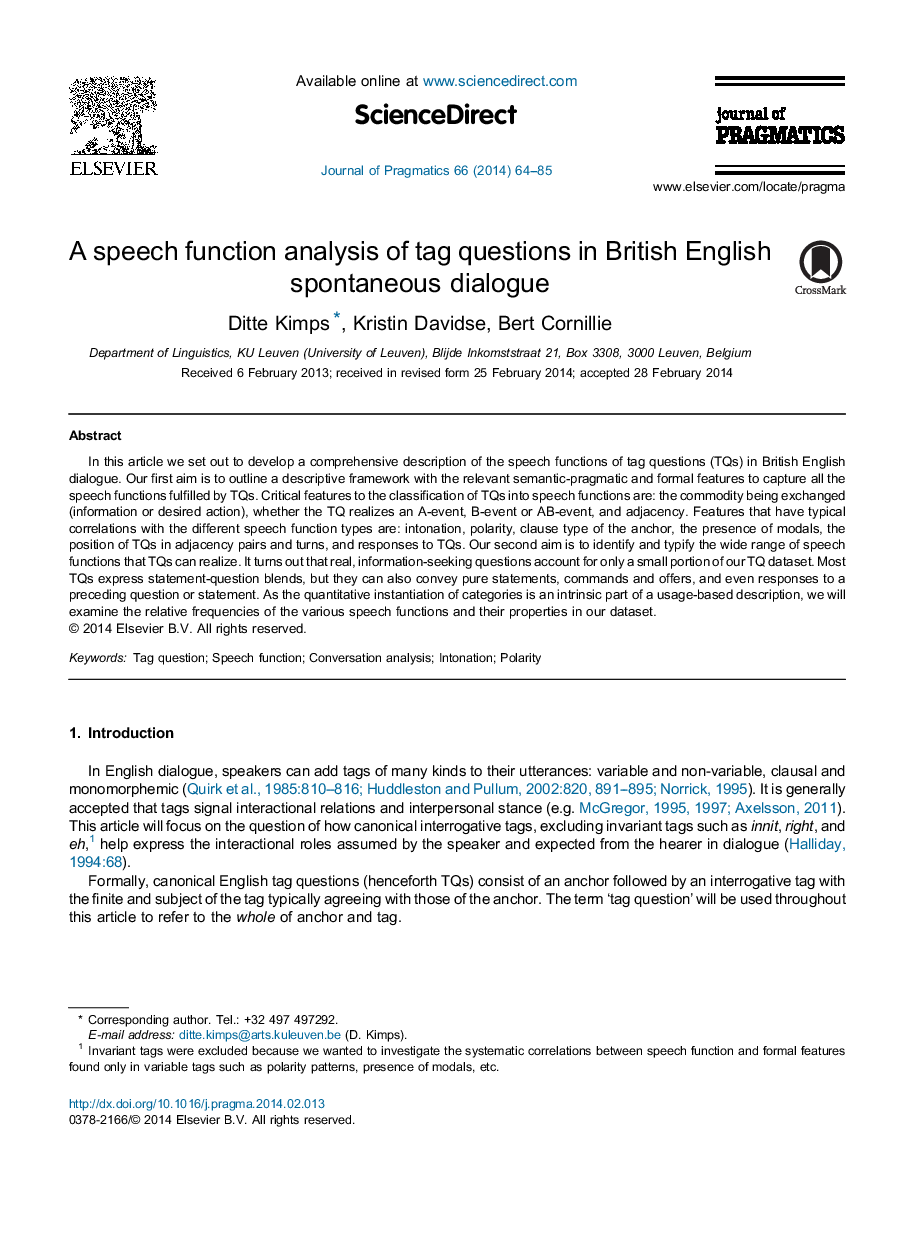| Article ID | Journal | Published Year | Pages | File Type |
|---|---|---|---|---|
| 932744 | Journal of Pragmatics | 2014 | 22 Pages |
•A typology of all speech functions that tag questions can realize in English dialogue.•Based on conversation analysis features correlated with formal features.•Conversation analysis of A-/B-/AB-events, adjacency, position in turns, and responses.•First usage-based description of TQ speech functions incorporating systematic analysis of intonation and polarity patterns.
In this article we set out to develop a comprehensive description of the speech functions of tag questions (TQs) in British English dialogue. Our first aim is to outline a descriptive framework with the relevant semantic-pragmatic and formal features to capture all the speech functions fulfilled by TQs. Critical features to the classification of TQs into speech functions are: the commodity being exchanged (information or desired action), whether the TQ realizes an A-event, B-event or AB-event, and adjacency. Features that have typical correlations with the different speech function types are: intonation, polarity, clause type of the anchor, the presence of modals, the position of TQs in adjacency pairs and turns, and responses to TQs. Our second aim is to identify and typify the wide range of speech functions that TQs can realize. It turns out that real, information-seeking questions account for only a small portion of our TQ dataset. Most TQs express statement-question blends, but they can also convey pure statements, commands and offers, and even responses to a preceding question or statement. As the quantitative instantiation of categories is an intrinsic part of a usage-based description, we will examine the relative frequencies of the various speech functions and their properties in our dataset.
